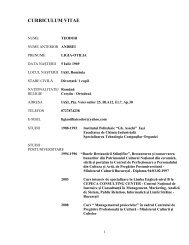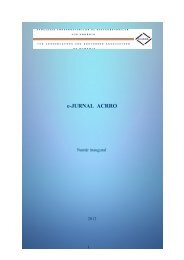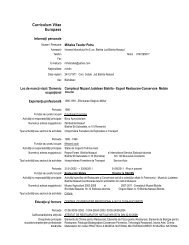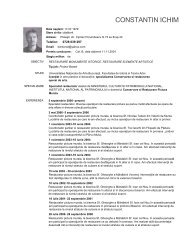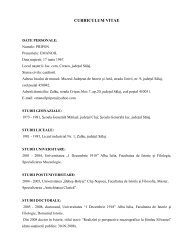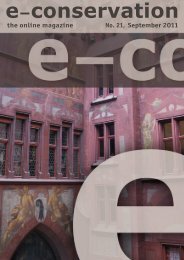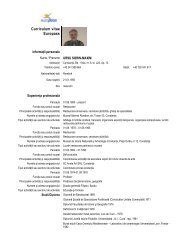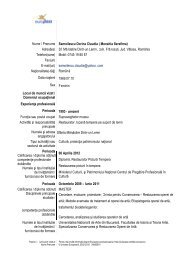e-conservation the online Magazine 16, oct 2010.pdf
e-conservation the online Magazine 16, oct 2010.pdf
e-conservation the online Magazine 16, oct 2010.pdf
You also want an ePaper? Increase the reach of your titles
YUMPU automatically turns print PDFs into web optimized ePapers that Google loves.
ABDELRAZEK ELNAGGAR et al.<br />
Research Aims<br />
Figure 1. A human mummy at Ehnasia Museum, Beni-Sweif,<br />
Egypt.<br />
Figure 2. Isolation of biological samples from a mummy at<br />
Ehnasia Museum (Beni-Sweif, Egypt).<br />
The objectives of <strong>the</strong> present investigation are to<br />
study <strong>the</strong> fungal colonization and exoenzymatic<br />
activities of some deteriorated Egyptian mummies,<br />
and <strong>the</strong> effect of mummification materials on <strong>the</strong><br />
fungal growth to determine <strong>the</strong> efficiency of <strong>the</strong>se<br />
materials in <strong>the</strong> mummification process. Fur<strong>the</strong>rmore,<br />
ano<strong>the</strong>r important aim is to study <strong>the</strong> effect<br />
of some fungicides in preservation of mummies<br />
from fungal attack.<br />
Introduction<br />
Biodeterioration is considered a great factor in <strong>the</strong><br />
decomposition of <strong>the</strong> Egyptian mummies, because<br />
fungi and bacteria grow and feed with many of<br />
<strong>the</strong>ir constituent products, such as protein, fats,<br />
starch and cellulose, which represent a stable substrate<br />
to microbial growth. There are a number of<br />
abiotic and biotic factors such as pollution, light,<br />
humidity, temperature, microorganisms, insects,<br />
etc., that have deteriorating effects on museum<br />
materials [1]. Among <strong>the</strong>se, biological agents<br />
such as actinomycetes, fungi, bacteria etc., may<br />
cause massive damage to museum objects [2].<br />
Studies on indoor aeromycoflora have attracted<br />
<strong>the</strong> attention of several aerobiologists [2-5].<br />
Martinez et al. [6] isolated a total of 469 fungal<br />
colonies from 12 mummies that presented deterioration<br />
attributed to colonizing fungi. Among<br />
<strong>the</strong> isolated fungi Penicillium, Cladosporium and<br />
Aspergillus were found. Most of <strong>the</strong>se fungi have<br />
<strong>the</strong> ability to produce various enzymes (cellulases,<br />
amylases, proteases, keratinases, etc.). Cellulase<br />
enzymes degrade cellulose found in linen bandages<br />
to double sugars and endoglaconases enzymes<br />
cut <strong>the</strong> cellulose chain in a random fashion<br />
whereas, exogluconases enzymes successively<br />
remove single cellobiose or glucose units from<br />
<strong>the</strong> non-reducing end of <strong>the</strong> cellulose chain [7,<br />
8]. Many fungi are able to cause zoonotic superficial<br />
infections as a consequence of invading<br />
keratinize tissues of skin, hair, and nails [9, 10].<br />
Materials and methods<br />
Samples<br />
Biological samples were taken from a linen-wrapped<br />
mummy, from <strong>the</strong> air of mummy chambers and<br />
from deteriorated Egyptian mummies preserved<br />
in museum storage as follows: human mummy<br />
no. 2520 and 2519 from <strong>the</strong> Ismailia Museum (Ismailiaa,<br />
Egypt); animal mummies No. 35 and 93<br />
from <strong>the</strong> El-Dokki Agriculture Museum (Cairo, Egypt)<br />
and human mummies in storage at Ehnasia Museum<br />
(Beni-Sweif, Egypt, see figures 1,2). Sampling of<br />
40 e-<strong>conservation</strong>



